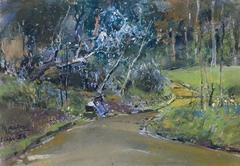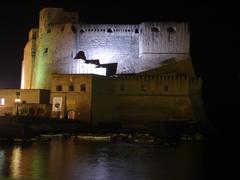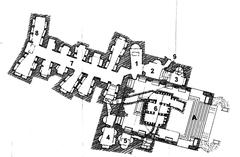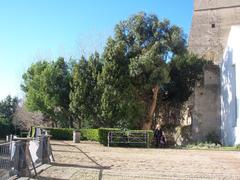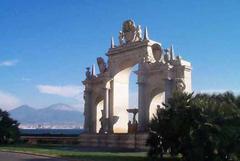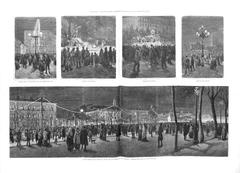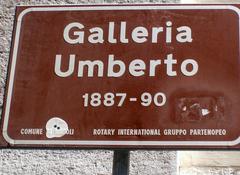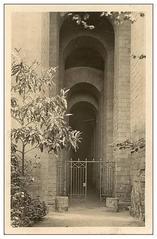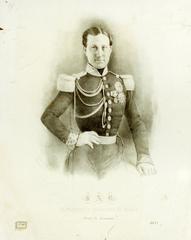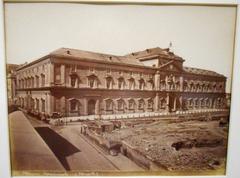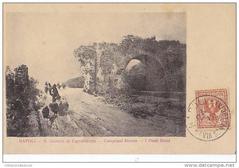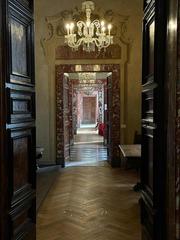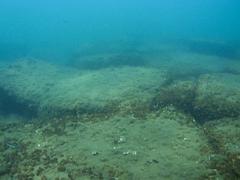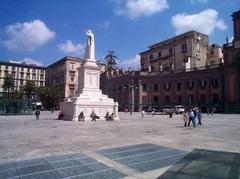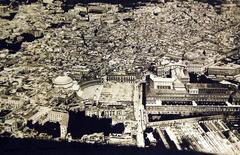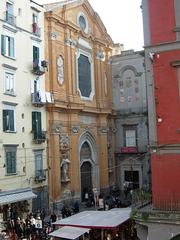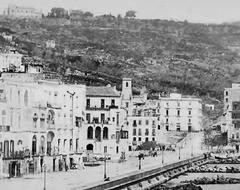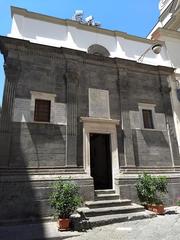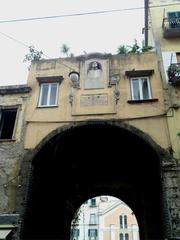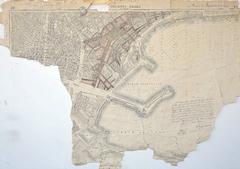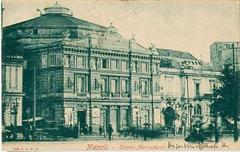Visiting Castello Aragonese di Baia in Naples: Tickets, Hours, and Travel Tips
Date: 31/07/2024
Introduction
The Castello Aragonese di Baia in Naples, Italy, stands as a monumental testament to the region’s rich and tumultuous history. Perched majestically on the Gulf of Naples, this castle has witnessed significant historical events from its inception in the late 15th century to its modern-day role as a cultural landmark. Initially constructed by King Alfonso II of Aragon in 1495 (around-naples.com), the castle’s strategic location made it a crucial military fortress. Over centuries, it has undergone various restorations and modifications, particularly after a devastating volcanic eruption in the 16th century and substantial enhancements in the 18th century under Charles of Bourbon (around-naples.com).
The castle’s resilience is further highlighted by its survival of a British attack in 1799 and its subsequent abandonment following the unification of Italy in 1861. In the 20th century, it found new purpose, first as a facility for military orphans and later as the home of the Archaeological Museum of the Phlegraean Fields (around-naples.com). Today, the castle attracts tourists from around the globe, offering a unique blend of historical insight and breathtaking views of the Gulf of Naples.
Table of Contents
- [Origins and Early Construction](#origins-and-early-constructionorigins-and-early-construction)
- [Volcanic Eruption and Restoration](#volcanic-eruption-and-restorationvolcanic-eruption-and-restoration)
- [18th Century Enhancements](#18th-century-enhancements18th-century-enhancements)
- [British Attack and Subsequent Abandonment](#british-attack-and-subsequent-abandonmentbritish-attack-and-subsequent-abandonment)
- [20th Century Restoration and Current Use](#20th-century-restoration-and-current-use20th-century-restoration-and-current-use)
- [Archaeological Museum of the Phlegraean Fields](#archaeological-museum-of-the-phlegraean-fieldsarchaeological-museum-of-the-phlegraean-fields)
- [Connection to Julius Caesar](#connection-to-julius-caesarconnection-to-julius-caesar)
- [Modern-Day Significance](#modern-day-significancemodern-day-significance)
- [Visitor Information: Hours, Tickets, and Tips](#visitor-information-hours-tickets-and-tipsvisitor-information-hours-tickets-and-tips)
- [FAQ Section](#faq-sectionfaq-section)
- [Conclusion](#conclusionconclusion)
- [References](#referencesreferences)
Origins and Early Construction
The Castello Aragonese di Baia was initially constructed in 1495, commissioned by King Alfonso II of Aragon. During this period, the Kingdom of Naples was focused on fortifying its defenses against frequent invasions. The strategic location of the castle, approximately 50 meters above sea level, allowed it to dominate the entire coastline, making it an essential military fortress (around-naples.com).
Volcanic Eruption and Restoration
Around fifty years after its construction, the castle faced significant damage due to a volcanic eruption that led to the formation of Monte Nuovo (New Mountain). This natural disaster necessitated extensive restoration and modifications, giving the castle much of its current appearance (around-naples.com).
18th Century Enhancements
In 1734, the castle underwent another significant restoration under Charles of Bourbon, King of Naples. This restoration was crucial as the castle had sustained damage during Charles’s conquest of the kingdom against the Austrians (around-naples.com).
British Attack and Subsequent Abandonment
In 1799, the castle successfully resisted an attack by the British fleet, showcasing its strategic military importance. However, following the unification of Italy in 1861, the castle was abandoned as it was no longer deemed necessary for military purposes (around-naples.com).
20th Century Restoration and Current Use
The castle saw a revival in 1927 when it was restored to serve as a facility for military orphans. This restoration marked the beginning of a new chapter in the castle’s history, transitioning from a military fortress to a site of historical and cultural significance (around-naples.com). In 1984, the ownership of the castle transferred to the Archaeological Superintendent of Naples and Caserta, leading to the establishment of the Archaeological Museum of the Phlegraean Fields within its walls (around-naples.com).
Archaeological Museum of the Phlegraean Fields
The Archaeological Museum of the Phlegraean Fields, housed within the Castello Aragonese di Baia, displays numerous artifacts discovered in the surrounding areas. These include finds from Cumae, the submerged Park of Baiae, the Rione Terra (the ghost town of Pozzuoli), the archaeological Baths of Baiae, and Liternum, where the tomb of Scipio Africanus is located (around-naples.com).
Connection to Julius Caesar
There is a historical hypothesis that the Aragonese Castle of Baiae may have been built on top of an existing villa belonging to Julius Caesar. This theory is supported by writings from the Roman historian Publio Cornelio Tacito, who suggested that Caesar’s residence was located high up, dominating the entire Gulf of Baiae (around-naples.com).
Modern-Day Significance
Today, the Castello Aragonese di Baia stands as a testament to the region’s rich history and cultural heritage. It is a popular tourist destination, attracting visitors from around the world who come to explore its historical significance and enjoy the breathtaking views of the Gulf of Naples.
Visitor Information: Hours, Tickets, and Tips
- Visiting Hours: The Castello Aragonese di Baia is open to the public from 9 AM to 6 PM daily. It’s recommended to check any updates on their official website before planning your visit.
- Tickets: Admission tickets can be purchased at the entrance or online. The general admission fee is €6, with discounts available for students and seniors.
- Travel Tips: The castle is accessible via public transport from Naples. Nearby attractions include the submerged Park of Baiae and the Baths of Baiae, perfect for a day trip.
- Special Events and Guided Tours: The castle regularly hosts special events and guided tours. Check the official website for more information.
- Photographic Spots: Don’t miss the panoramic views of the Gulf of Naples from the castle’s highest points.
FAQ Section
Q: What are the Castello Aragonese di Baia visiting hours?
A: The castle is open from 9 AM to 6 PM daily.
Q: How much are the tickets for the Castello Aragonese di Baia?
A: General admission is €6, with discounts for students and seniors.
Q: Are there guided tours available?
A: Yes, the castle offers guided tours. Check the official website for more details.
Q: What other attractions are nearby?
A: Nearby attractions include the submerged Park of Baiae and the archaeological Baths of Baiae.
Conclusion
The Castello Aragonese di Baia is not just a historical monument but a symbol of the region’s resilience and strategic importance throughout history. From its initial construction in the late 15th century to its modern-day role as a cultural and historical landmark, the castle continues to captivate visitors with its rich history and stunning views. Whether you are a history enthusiast or simply looking to explore one of Naples’ most significant sites, the Castello Aragonese di Baia offers a memorable and enriching experience. Plan your visit today to immerse yourself in the rich tapestry of Naples’ history and heritage.
